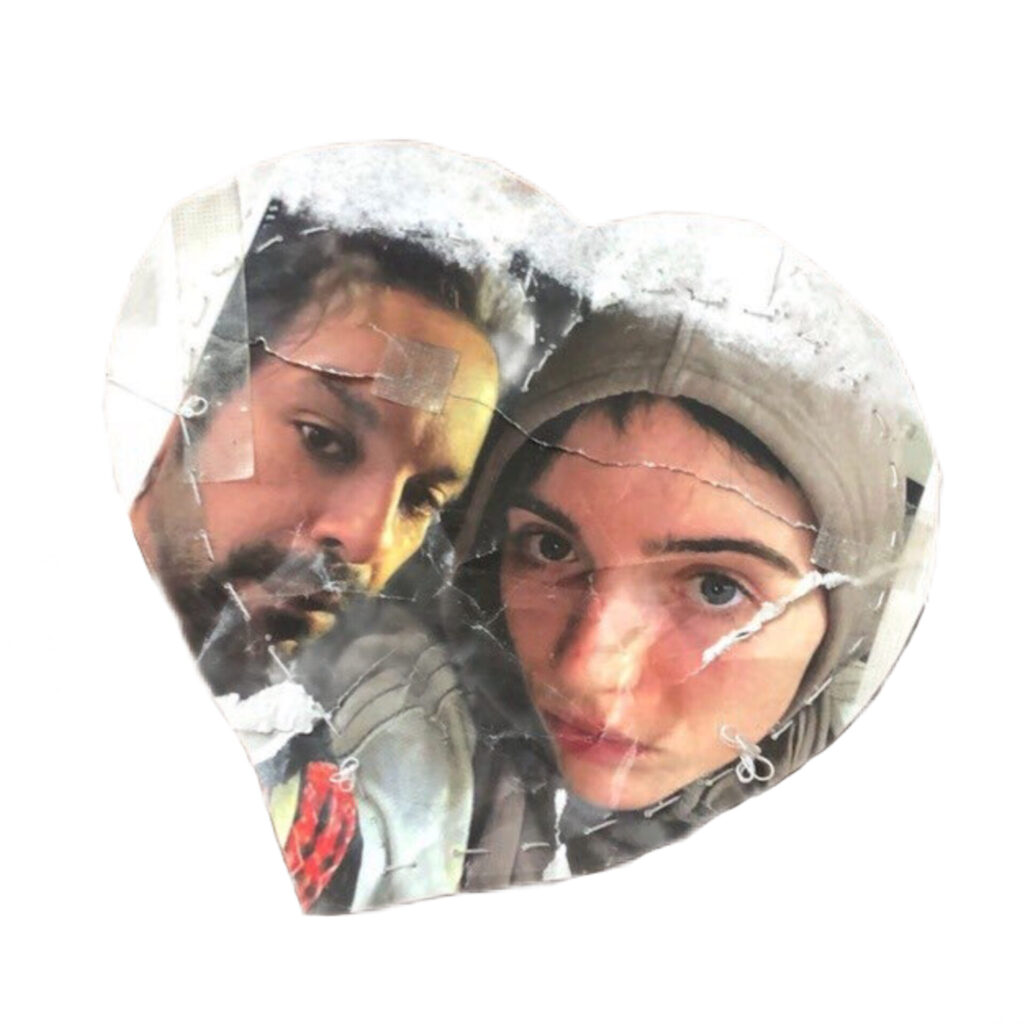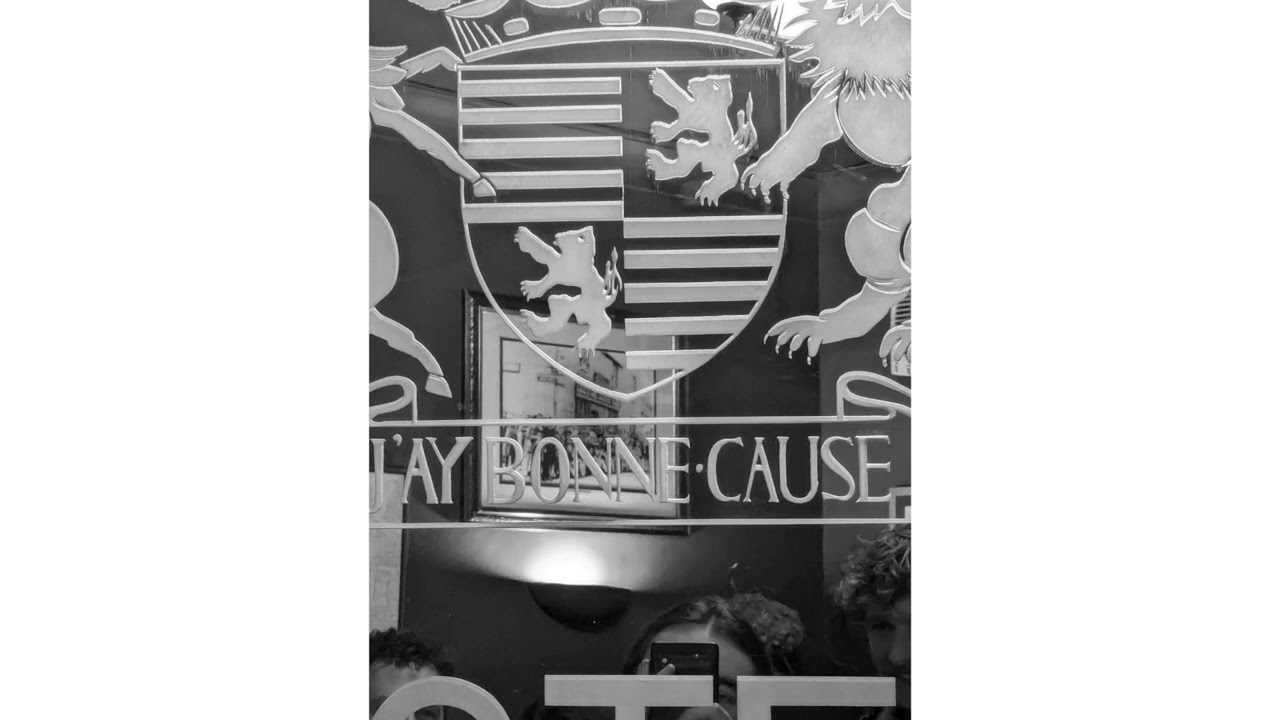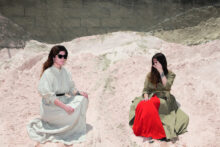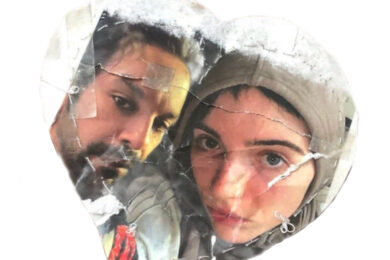Stridulation is how insects produce sounds by rubbing together parts of their body. Some grasshoppers, for instance, do so by moving their wings against their legs. It’s the action that produces the incessant, peculiar sound they make, sometimes called a ‘song’ or ‘chirping’. Robert Schwarz’s Stridulations 1-14 takes these sounds as its starting point. The Vienna-based artist merges field recordings of insects with his own synthesized impersonations. The result is a head-spinning, fluctuating sound world where electronics and insects exist side by side in strange resonance.
There’s an intriguing embrace of distance on Stridulations 1-14, Schwarz playing with the gap between insect and machine. On ‘PJC’ a swarm of clicks gives way to more tonal notes and pulsating bass. A peculiar conversation emerges, as if Schwarz is trying to do with insect sounds what humans have been doing to bird song for centuries – searching for the music in their voices. Elsewhere, he erects burbling sci-fi adjacent soundscapes, as if trying to pinpoint the places human and insect soundworlds have crossed over.
Humans have synthesized, field recorded or aped bird songs with their own voices for millennia. But an exploration of insects’ place in the frequency spectrum is less common. Part of that is likely down to the fact that insect sounds are far more complicated to approximate with a human voice. Nevertheless, in the tape scene at least, there seem to be more artists exploring the complexities of the insect soundscape. Where Schwarz uses electronics and field recordings, Montreal-based artist Anne-F Jacques takes a different approach. She doesn’t field record insects on her recently released tape for Mold Fluid, L’ampoule Et L’insecte, but the sounds she uses often appear to be impersonating insects.
On L’ampoule Et L’insecte her music scurries, buzzes, clicks and trills. But, it’s also very clearly not coming from living creatures. ‘Une Mare En Mai’ is a mix of electrical buzzess and fidgety ceramic percussion, yet the way the piece moves and the frequencies it uses sound insect-like. ‘Toujours Sommeil’ meanwhile, opens with a flutter like the wings of a moth. In reality, Anne-F Jacques’ music seems to come from close mic’ing and a selection of small, possibly motor-driven objects. It might not be the sound of insects themselves, but it betrays an affinity with the peculiar sounds they make.
FelintoUtopia MilhãoBokeh Versions / Glossy Mistakes
São Paulo-based Felinto’s practice is rooted in sound but also stretches well beyond it. He’s a prolific figure in the city’s overlapping electronics, jazz and punk scenes. He’s an organiser and participant in a vast array of activist and educational groups confronting racist, sexual, creative and material oppression in his home city and beyond. His work stretches from theatre to curatorship and also to yoga lessons for children and parenting studies. His music threads into these concerns, as the liner notes for Utopia Milhão explain; the questions shaping his activism and research are the same that shape his music. Utopia Milhão marks his fourth tape in collaboration with Bristol’s Bokeh Versions label, and it captures a paradigm shift in the range and scope of his music. Dub remains the core, but now it’s a platform into something wider. On opener ‘Utopia’, soaring trumpet melts into jungle breaks and freewheeling acoustic percussion. ‘Frequeéncia Ubiüqua’ mixes celestial synths, drums and voice with growling sounds in the lower registers. As if an immense mass has been cajoled into levitating. ‘Sol Na Cabecça’ is swaying late night dream dub broadcast through a border bending soundscape of elastic noise, industrial weight and roving percussion. While this is Felinto’s album, it was realised as a community project featuring members of Deafkids, Rakta, Yao Bobby and more. It captures that plurality in the richness and thickness of the sound that floods out of it. A collective celebration of joyful collisions.
Ghostmass 大鬼众Improvisation For Dusty BallzDusty Ballz
The members of Beijing-based Ghostmass 大鬼众 include veteran poet, sound and performance artist Yan Jun, as well as Li Weisi and Li Qing, who make up the duo Soviet Pop. That trio are joined by Yang Kuku for his first time playing in a band. Soviet Pop and Yan Jun typically create quiet compositions crafted from anything other than traditional instruments. As Ghostmass, they rock in both the sludgiest and most hyperactive senses of the world while never evading their more abstract, non-music interests. Improvisation fFr Dusty Ballz coincides with the band dropping a studio LP on French label WV Sorcerer Productions called Ghost Meditation. The cassette release is more than just an afterthought to its vinyl sibling. Ghost Mediation is a growling, lumbering blast of doomy ferocity. Sprouting from the Black Sabbath via Sunn O))) family tree but with a sizzling energy and elasticity seldom present in that lineage. The tape inverts that dynamic. A frenzied doppelganger of cartwheeling drums, babbling, groaning and coughing vocals, all threaded together by guitars which riff like an electrical storm. It’s untethered noise rock of the highest order, only slowing into the glacial pace of the accompanying record on its final track. Where Ghost Meditation simmers and seethes Improvisation For Dusty Ballz is possessed by instinctive, freewheeling energy. A ferocious release in its own right, coupled with Ghost Meditation it forms a spectral dyad. One eerily haunts, the other is a mischievous poltergeist.
LaminaSueños AcuáticosMappa
On 2023’s Bajo Tierra, released on Wabi-Sabi Tapes, Lamina (aka French artist Clarice Calvo-Pinsole) was inspired by swamps to create a burbling, croaking ecosystem of sound. On Sueños Acuáticos (Aquatic Dreams), she dwells on the movement and texture of water itself. The album is built from convergences of field recordings and synthesis, the two flowing into each other so seamlessly it’s not always possible to tell where one ends and the other begins. On opener ‘Aqualines’, glassy droplets trickle and flurry like a fast-flowing stream over a rock bed. ‘Burbuja Borrosa’ moves from frozen chords and tranquil wildlife-like sounds into more fervid activity, as if a river’s suddenly defrosted and gently disrupted the equilibrium that built up around it. Moments of more human sound enter, ‘Creatura Morada’ centered around bell-like patterns. But even these seem mediated through a watery lens, as though we’re hearing human culture from a river-dwelling creature’s perspective. There are parallels, in ideas if not tools, with Annea Lockwood, in that Lamina also deploys sound to shift our perspective. A richly layered work that goes beyond sonic intricacy and embodies a specific way of sensing the world.
Belisimo / Unknown ArtistThe Release Is Printed On An Edition Of One Custom Thimble / James Blunt DocumentaryEveryday Samething
Belisimo’s The Release Is Printed On An Edition Of One Custom Thimble is fourteen minutes of deliriously disturbed sound. Beginning with what sounds like a scuffle in a synthetic underpass, it moves through queasy pop song mutilation and on into a maelstrom of concrète percussion and electrical noise. A curious space where song and background kerfuffle have melded into an inseparable singularity.
James Blunt Documentary, by an anonymous artist, starts in a cascade of digital noise before slurred voices enter. Slowed down to the cusp of nonsensical, it seems to be an interview, perhaps a sample of Blunt himself, or a reenactment performed by whoever’s behind this tape. The sidelong track sounds like a particularly vicious broadcast signal intrusion that’s been inverted. The harshness invaded by the mundane rather than the other way around. Both tapes reinforce the peculiar trajectory of the Everyday Samething label. Where pop culture materials hit avant-garde sound strategy to unearth a curious crease in the continuum between everyday signals and radical noise.
Bara & Isai,iWarm Winters
On ‘Lover Organ’, the third track on Bara & Isa’s (ii), time momentarily unravels. An archaic sounding folk melody plays out tentatively on a harp seemingly accompanied by rustling through a phone microphone. Synthetic chirps and what sounds like a kazoo enter the mix. Things glitch and warp, bend and extend, and a sweet love song collapses into whispered sweet nothings. The duo, one based in Vienna, one in London, created this album by swapping files online between 2021 and 2024. A sense of bridging distances creeps through the whole of (ii), organs rise into spooky clouds. Wind instruments coo and glow. Songs solidify and then evaporate as elegant choral vocals dance through babbles of sped up voices. Through all the disorientating sonics, Isa and Bara’s voices ground the release. At their most poignant they sing in close but slightly disjointed unison. A harmony which becomes all the more moving for the feeling it’s being achieved against the barriers of physical distance. Their music toys with proximity and intimacy, it carries a romanticism which feels forged from a struggle for connection in an isolating world. Tender, precarious folk ballads for a time which struggles to stay in sync.
Various ArtistsTempat Angker: Horror Movie OSTs And Sound FX From Indonesia (1971-2015)Discrepant
Luigi Monteanni is co-curator of the brilliant Artetetra label and member of the duo Babau. For Tempat Angker he acts as DJ, building on a year of fieldwork research spent in West Java, Indonesia. Tempat Angker dives into Indonesia’s horror film history, a mixtape of cuts from movies made in the country between 1971 and 2015. As an accompanying essay printed in the tape’s sleeve from filmmaker and artist Riar Rizaldi explains, the period covered by Tempat Angker witnessed shifts in the aesthetics and sound design of fantasy and horror films in Indonesia, changes that were entangled in broader social and political upheavals. Across the double cassette, Monteanni blends sound effects, film dialogue and soundtracks into a bamboozling collage. Eschewing tracking the historic narrative for a whirlwind of cackling voices, cursed sound effects and evil incidental music. Occasionally, ominous synths and booming drums appear which wouldn’t sound out of place on a John Carpenter soundtrack. Other times, less familiar scares emerge, giving us an insight into the particular sound world of Indonesian movies across four decades. The tape sidesteps hackneyed horror tropes for more insidious, uneasy sounds. Separated from their visual components, they create a cursed and disorientating soundscape which becomes an uncanny world in its own right.
The Concept HorsePublic DetailStudents Of Decay
Earlier this month I visited an exhibition in Porto by Lisbon-based artist Sara Bichão. Her works, made from ink as well as chalk from the ground outside Serralves Gallery where the exhibition was hosted, are superficially simple yet smothered in detail. They’re painted on small slabs of cardboard rather than canvases. Simple, perhaps abstract shapes become increasingly vivid the more you look at them. They’re texturally rich despite their simplicity, smears of colour have flourishes of sharp lines cut among them. Every line fluctuates in depth and intensity. Something about Bichão’s work resonates with Public Detail, the new tape by Vienna-based the concept horse. The tape follows similar patterns to More Meaningful Algebra from earlier this year, while also managing to be completely different. This new release has more of a wistful undertone, and uses warmer and more acoustic textures compared to its bleepier predecessor. Opening with ‘Flashlight Out’’s warped and static drenched piano loop, the album moves through back-pedalling percussion, blobs of electrical hum, prickly rhythms and, on closer ‘Brand New Descriptions’ a tapestry of bells being broadcast in from another realm. It’s an album of scenes. Simple musical arrangements which reveal fascinating detail and depth. Rigid structures whose outlines fluctuate and bend. The tracks feel intimately connected to each other but have enough variation to avoid monotony. Like a perfectly curated collection of sketches where the colours change but the underlying perspective is never lost.
Andy Loebs CercopithecoidOrange Milk
At their best, video game soundtracks go beyond world-building and contain narratives in themselves. Accumulations of tension and relief. Drastic shifts in mood to make transitions between dank dungeons and utopian skyways more palpable than a mere change in background. A nuanced understanding of music genre signifiers and how they can tell stories in themselves. In many ways, they’re antithetical to the smooth horizontal movement of algorithm defined streaming playlists. I don’t know the extent to which gaming influenced Andy Loebs’ new tape Cercopithecoid. Judging by the boisterous midi epics across this album they probably had some part to play. But the ability to wield a broad musical palette to tell a story without any words is definitely present. Cercopithecoid is less frantic than Loebs’ 2023 album, Hyperlink Anamorphosis. There’s more patient exploration,and that patience also brings home the sheer diversity of sounds Loebs works with. ‘Monkey Videos’ bends rubbery rhythms into soaring panoramic interludes, replete with elastic, chromatic bass fills. ‘Axonometrics’ is slippery footwork, reminiscent of the most sideways experiments conjured by his Orange Milk label mate Foodman. Through it all come gleeful jolts in time signature which have more in common with 70s prog than contemporary electronic music. The whole record conjures triumphs, calamities and erratic movements. Loebs goes beyond world building. More than just scenery, there are whole narrative arcs in these tracks.
Thomas Carroll, Mia WindsorA Cake Of AshesInfant Tree
Mia Windsor and Thomas Carroll make deconstructed organ music, quite literally, on A Cake of Ashes. On the first side of the tape the pair play decoupled organ pipes. That is, metal pipes that have been removed from an organ and recycled into wind instruments. While each decoupled pipe can only play one note, the pair noticed they’re rich in harmonics. These metal pipes are also joined by wooden pipes from Windsor’s own collection, as well as a reed organ. The B-side meanwhile, includes the last recording on a pipe organ in Phipps Hall at the University Of Huddersfield before it was relocated to a church in Ripon. Carroll and Windsor stay with the quirks and idiosyncrasies of their instruments (Windsor even freezing tones through electronics at some points), exploring peculiarities and weird anomalies rather than using organ tone as a short cut to sounding celestial. Opener ‘Black Rays’ begins with a flickering coo from one of the blown pipes which triggers Carroll’s electronics, a snag of electrical feedback wavering in lopsided harmony with the organ tone. On ‘Peach Black’ you can more clearly hear notes bend and curve as wind flows unevenly through mouths and into the metal pipes. ‘Cake Of Ashes 1’ has a skeletal melody on piano underpin a backdrop that swings between evoking ghostly voices and the sedate hum of electrical appliances. Carroll and Windsor embrace the wobbly temperament of old organs with magical results.





